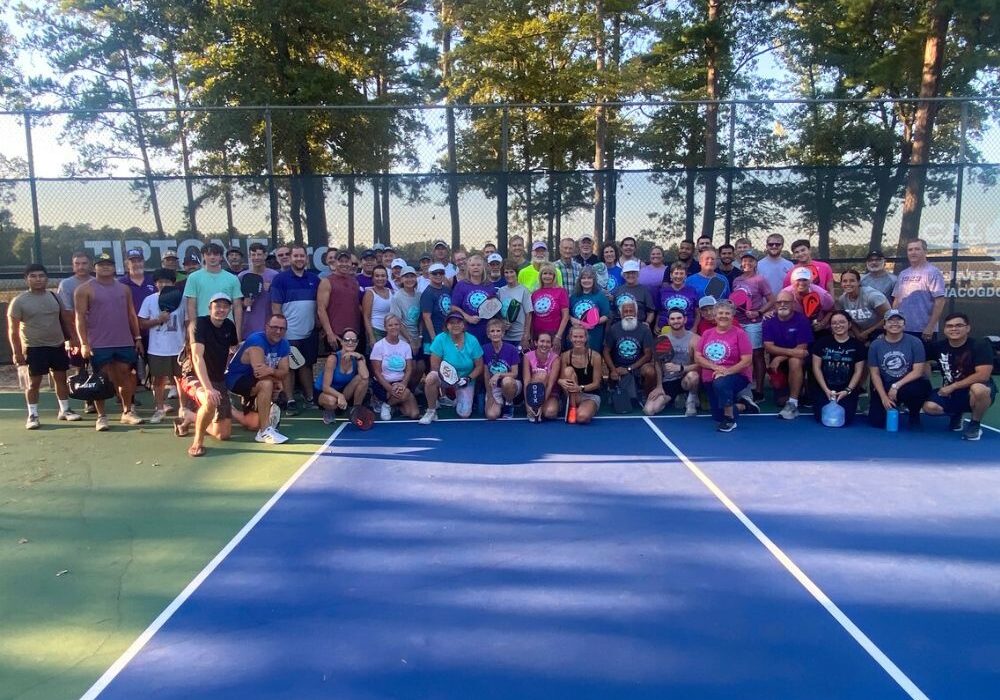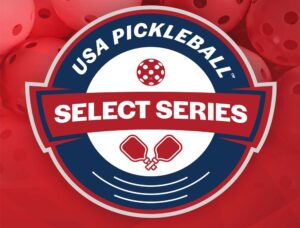How the East Texas Town of Nacogdoches Went From Zero to Pickleball Hotbed
By Karen Price
Red Line Editorial
Robert McCandless never thought he’d be a pickleball player.
His wife, Gail, was the one who grew up playing sports, and pickleball was going to be her thing once they settled down in retirement. An artist, Robert planned to spend time in his woodshop.
But when they finally did settle in the East Texas town of Nacogdoches a little over four years ago, Gail needed a partner. Robert had no choice.
“I hit that ball one or two times and said, ‘Uh oh, now I know what a puppy feels like when you throw a ball,’” he said. “I immediately got sucked into it. Like, this is cool. Then I went crazy for pickleball.”
Now, thanks to their efforts, Nacogdoches has gone from a town of 30,000 with no pickleball courts and a few people who wanted to play to a town with no fewer than 18 courts and more than 300 regular players.
“It just does my heart good to be able to see those courts full and know people are meeting one another and they’re getting along,” said Robert, 75. “It’s bringing people together and it’s increasing people’s health. You don’t have to be lonely in this town. Don’t have a paddle? Come. We’ll loan you one. Everyone’s got two or three. That’s what does my heart good.”
Robert and Gail lived for 35 years in Austin, but after they tired of life in the city, they sold everything and took to the road. They spent the next seven years in their trailer, traveling from church camp to church camp, spending several months at a time volunteering to help do repairs, paint or take on whatever the camp needed.
It was at one of the camps where Gail, 74, first learned about pickleball.
“They were so inviting when I walked on the court,” she said. “They put a paddle in my hand, showed me the rules, and it was a nice community.”
One day shortly after they settled down, Gail noticed a post on a local online community page that said, “I thought Nacogdoches was supposed to be a retirement city. Where are the pickleball courts?” She remembered the name of the woman who wrote it, and several weeks later the two met at the local farmer’s market. With the support of a handful of other interested players, Robert and Gail convinced the city’s recreation department to let them use space in the gym. They had to put down the tape and take it back up every day, but before long, the makeshift courts were filled and had people waiting to play. They also set up a few courts at the gym in their church.
Although it was space to play, it wasn’t ideal.
So Robert began talking to city officials about the rundown tennis courts at a nearby park. If the city could supply the materials, he said, they could get a group together to paint them and do the work to convert the space to six pickleball courts.
Once finished, those soon filled with players, too.
“It was funny because the city didn’t give us nets, they just let us mark courts off,” Robert said. “Well, I had a net, someone else bought a net and someone else bought a net, and then at Christmas I think everyone who played must have gotten a net for Christmas. You’ve never seen so many different styles and colors of nets.”
A private donor had been trying to give the city money to create 12 new courts on an old tennis pad in another part of town. With the sport’s popularity now proven, the city let that donor fund this project.
Robert appreciates that so much of the work and funding to create the courts have come from private funds and volunteer hours. Their work is contributing to making the city better, he said.
“I want to have an investment and see other people have an investment in things going on in the city,” he said. “Whether it’s time, talent or treasure, it makes no difference, but we all need to be a part of it.”
Among the 300 people who now play regularly in Nacogdoches are the mayor and his wife, the city manager and his wife, and members of the police department, all at Robert’s persistent urging. One gentleman has started a competitive league, they’re starting a senior league and Robert and Gail are happy to be handing over some of the organizational reins to younger generations.
“It’s like a big family,” Gail said. “If we have a new person come on the court they’re greeted and then we put a paddle in their hand and teach them to play. We’re a very welcoming group of folks. That’s how we started it, and that’s how they’re keeping it going. We taught them well.”
Robert said it’s been amazing to watch the growth in such a short period of time. He sees no signs of it slowing down, either.
“Everyone says I’ve done a lot of work, and I haven’t,” he said. “I’ve met people, and I like meeting people and talking to people. I know half the people in the city now. What pickleball has done for me is more than what I’ve done for pickleball. It introduced me to all these people, and I love it.”
Karen Price is a reporter from Pittsburgh who has covered Olympic and Paralympic sports for various publications. She is a freelance contributor to USA Pickleball on behalf of Red Line Editorial, Inc.





